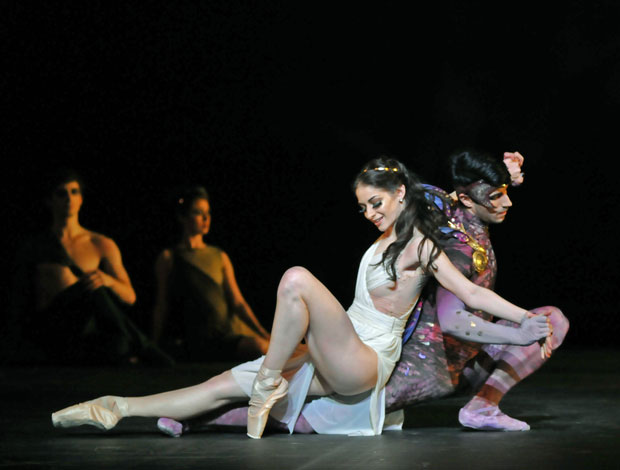
English National Ballet
Beyond Ballet Russes: Firebird, L-après-midi d’un faune, Faun(e), The Rite of Spring
London, Coliseum
22 March 2012
www.ballet.org.uk
English National Ballet proudly claims a direct lineage to Diaghilev’s Ballets Russes through Festival Ballet’s founders, Alicia Markova and Anton Dolin. Though the company used to perform some of the Diaghilev-era ballets (Les Sylphides, Petrushka, Schéhérézade, Le Tricorne), they’ve vanished from the repertoire. Wayne Eagling has aimed to re-establish the link with Ballets Russes-themed programmes at Sadler’s Wells in 2009 and this spring at the Coliseum, in what turns out to be his last season with ENB. Rather than simply reviving productions from the last century, he has introduced updated ones: in the first Coliseum programme, a radical re-imagining of The Firebird by a young choreographer, George Williamson; a faithful-as-can-be reconstruction of L’après-midi d’un faune, followed by David Dawson’s Faun(e) from 2009; and Kenneth MacMillan’s 1962 Rite of Spring in new designs.
Stravinsky’s Firebird score is fair game for choreographers, of whom there have been many since Fokine in 1910: Williamson, a 2010 graduate of ENB School, and Alexei Ratmansky (for American Ballet Theatre, also this March) are the latest. Williamson uses a suite from The Firebird instead of the full 46 minute score and ignores the original scenario. Instead, he proposes an ecological fable in which the Firebird represents ‘nature in its purest form’, according to the brief synopsis in the programme. I confess I have no idea what was going on. A rambling programme note provides little information other than design concepts worked on by David Bamber and students at a London school of fashion and design.

Ksenia Ovsyanick as the Firebird is a mysterious creature in glittering body tights and scaly armour-plating, sprouting feathers like a Bird of Paradise. She loses these in the course of the ballet to other characters, including a Peacock (Francisco Bosch), who postures in purple like Nikolai Tsiskaridze on a particularly bad night, and a siren in red (Adela Ramirez), credited as Lead Celebrity. Eight characters are named in the cast sheet, three of them Muses, whose wild black wigs and purple outfits make them look like vengeful Furies. Junor Souza, billed as an Army Captain, is the main man manipulating the Firebird. He has a dynamic solo to music associated with the monsters in Fokine’s version. Laurretta Summerscales as Purity, all in white, mourns the fate of the deplumed Firebird to the Lullaby music. She then rejoices when the shorn bird is re-dressed by the corps: they may represent humanity coming to its senses and her rescue. So all ends well.
To Williamson’s credit, the action, though baffling, never palls. He knows how to deploy a diverse cast, using an interesting vocabulary of classical ballet steps and partnering. He’s obviously fired up his dancers to commit themselves to their roles, flaunting their glitzy costumes with panache. But it’s a muddled piece, overpowered by Stravinsky’s myth-making music.

The seeming mis-match between Debussy’s languorous score for L’Après-midi d’un faune and Nijinsky’s terse, two-dimensional choreography upset its first audiences in 1912 – as did its orgasmic ending. Now it’s reverentially remounted as a modern classic. To have any impact these days, the Faune dancer needs a compelling presence and a profound belief that what he is doing matters. Dmitri Gruzdyev was conscientious, but too mature for a lithe young inhuman creature. The nymphs looked lovely, apart from the shiny synthetic shift for Elena Glurdjidze as their leader. The curtain came down discreetly before the Faune had finished with her shawl.
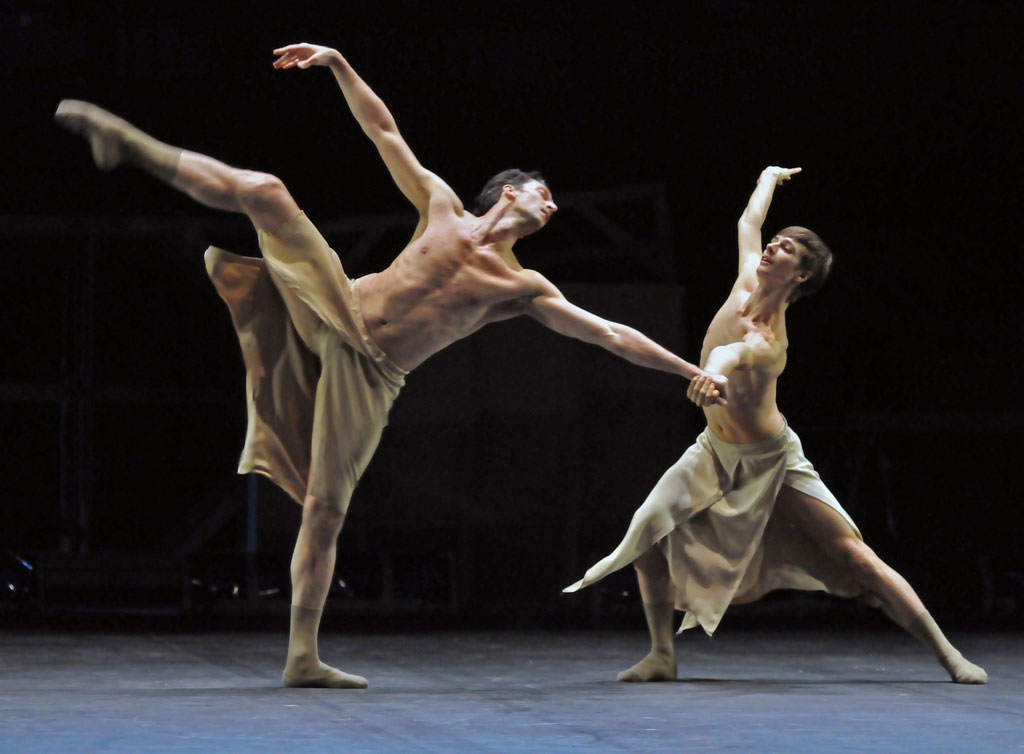
Dawson’s Faun(e) duet does away with Bakst’s backdrop and Debussy’s orchestration, setting two pianos distanced from each other on a bare stage. Raphael Coumes-Marquet (from the Dresden Semper Oper Ballet) was the masterful leader, Jan Casier (Royal Ballet of Flanders) the neophyte. The duet could be read as young Nijinsky with his mentor/lover Diaghilev or as an older dancer passing on his wisdom to a self-absorbed star in waiting. Touchingly done by two fine dancers who embodied innocence and experience, its spareness defied the programme’s insistence on lavish collaboration as the way to pay tribute to the Ballets Russes.
The Italian fashion designer Kinder Aggugini was commissioned to reimagine MacMillan’s Rite of Spring, which ENB first performed in 1999 in Yolande Sonnabend’s designs. Aggugini’s costumes (there’s no set, just dramatic lighting by John B. Read) suggest a timeless tribe in thrall to a sacrificial rite for its own sake. Stravinsky’s conception for his music was of a primitive ritual that followed prescribed patterns for old and young, male and female, culminating in a death overseen by shamans. Aggugini’s designs make no distinction between the sexes, though one set of celebrants expose somewhat more of their limbs. Black costumes, banded in opaque and transparent sections with dark red swirls, transform the dancers into computer-game combatants. Braided hairdo-headdresses and scarification slashes around their jaws mark them as tribal warriors on an alien planet.
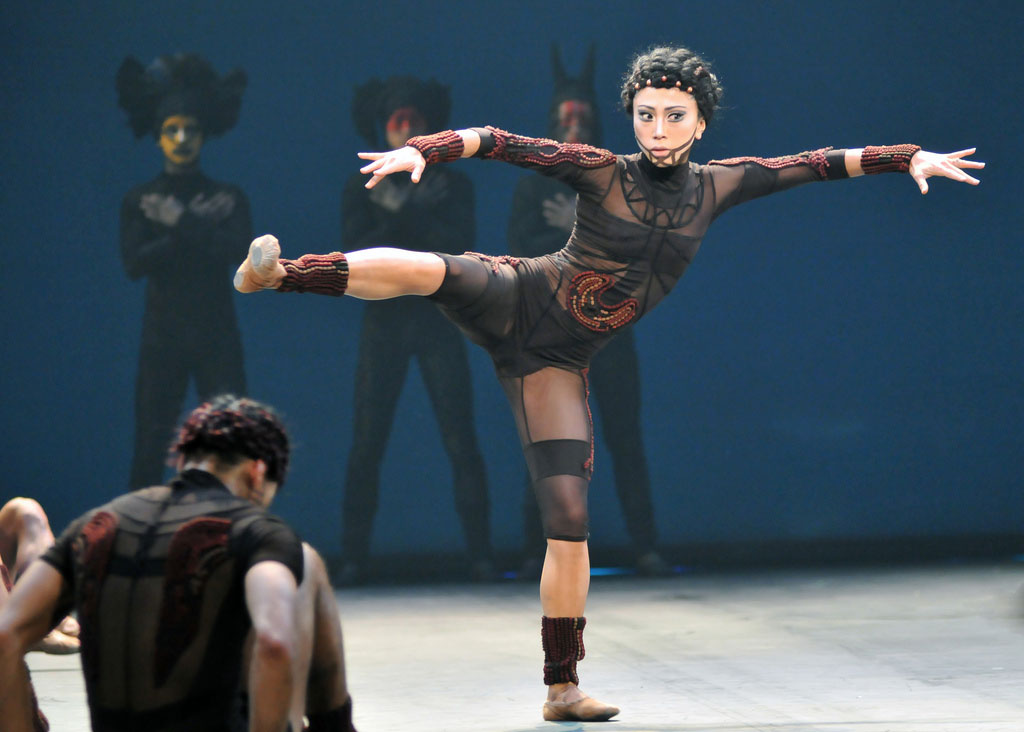
There’s no reason for what they do, since there’s no allusion to the seasons. They resemble ants, driven by a communal impulse they may not understand. In the second section, voodoo figures emerge in exotic headdresses and lurid make-up, invisible once their backs are turned. They appear to have less power than the will of the mass, waiting to witness a death. Erina Takahashi as the Chosen One seems almost insignificant as she drives herself to oblivion; she’s watched by her fellows, daemons of death, whose appliqué designs on their outfits resemble wings.
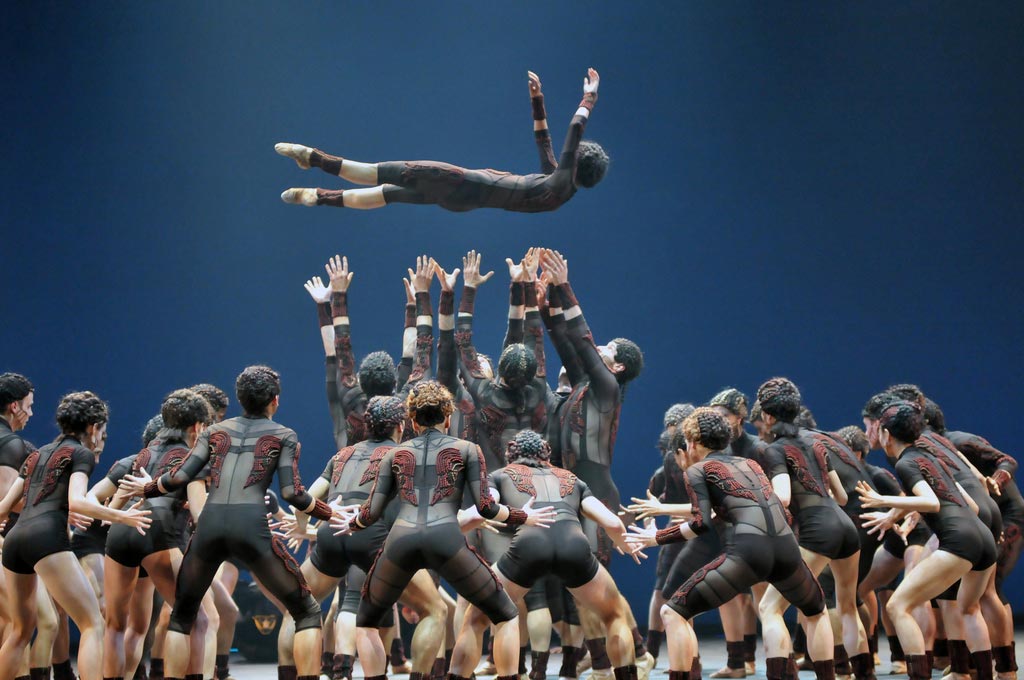
MacMillan’s pounding choreography, now fifty years old, is given fresh energy in this dark context, performed with frightening abandon by ENB’s anonymous dancers. The company’s orchestra under Gavin Sutherland rejoice in the scores Diaghilev commissioned. Were it not for the music, which has its own place in the concert hall, companies, choreographers and audiences would never have retained their fascination with these strange early-twentieth-century ballets.















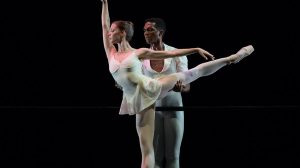

You must be logged in to post a comment.